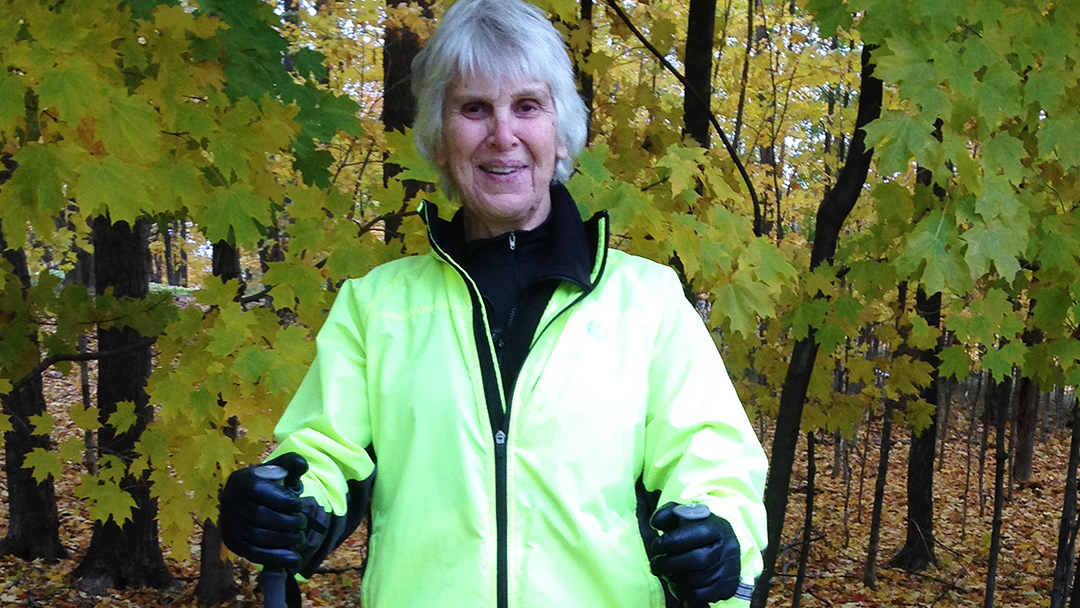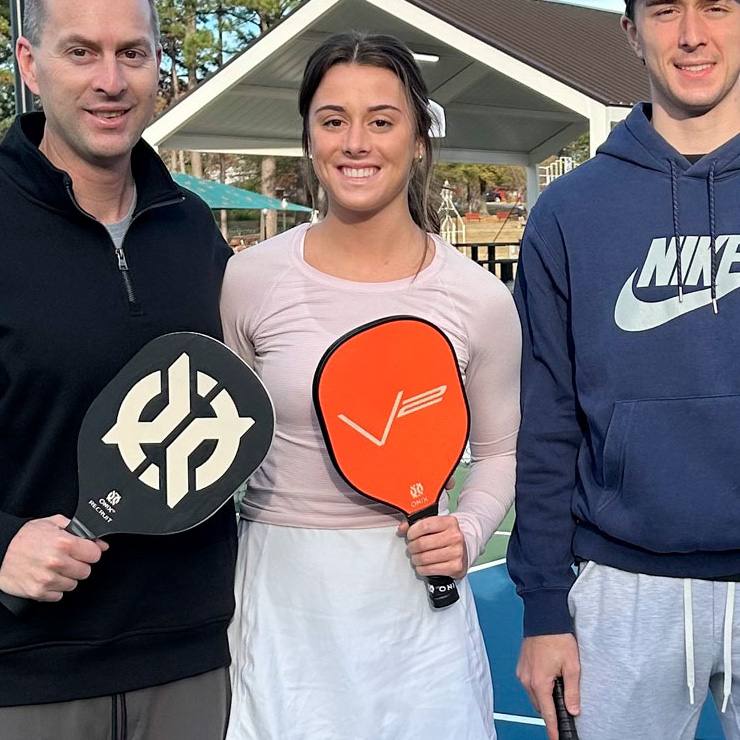Kathie Hanson went from being an active outdoor enthusiast to being unable to walk without assistance. But the care she received at Mayo Clinic has again allowed her to take part in the many activities that fill her life with joy.
Swimming has been a huge part of Kathie Hanson's life. She was a lifeguard and water safety instructor in her 20s, and she spent 30 years at the Y in Duluth, Minnesota, as a swim teacher for adults who were afraid of the water.
"It's the most marvelous experience," Kathie says. "There's something about being in the water that's so restorative."
For a time, however, Kathie thought her days in the water might be over, along with her enjoyment of many other active pursuits.
"I was experiencing a lot of pain down my legs," says the 77-year-old former physical therapist who was used to doing 3-mile hikes several times a week. "I couldn't walk without assistance or extreme pain. I couldn't do anything I loved to do outdoors. I didn't want to take opioids, so I tried everything else. But it was not a good life."
At that point, she decided to call Mayo Clinic. "I trusted Mayo to have the most effective and recent treatment, and tell me whether my condition could be helped," Kathie says.
Seeking better quality of life
In June 2017, during her first consult with Michelle Clarke, M.D., a neurosurgeon at Mayo Clinic's Rochester campus, Kathie had an electromyogram on her legs. The nerve conduction study was done to see if the source of her pain was in her spine. The test revealed Kathie's leg pain was coming from compression of one of the nerve roots in her spine from degenerative scoliosis.
Fortunately, the compression could be treated without surgery, and a guided spinal injection of steroids successfully eliminated Kathie's pain. Unfortunately, two months later, another problem surfaced. Kathie began experiencing weakness in her hands, along with balance problems.
"I had to watch my feet when I would walk," Kathie says. "I was terrified of walking."
"I trusted Mayo to have the most effective and recent treatment, and tell me whether my condition could be helped."
Kathie Hanson
In December 2017, Kathie had a consult with another Mayo Clinic neurosurgeon, Benjamin Elder, M.D., Ph.D. After reviewing the results of an MRI of the cervical part of the spine in Kathie's neck, Dr. Elder diagnosed severe cervical myelopathy from spinal cord compression.
"Degeneration of the joints and discs in her neck was causing the spinal cord compression and her difficulty with walking," Dr. Elder says. "Many patients who have progressive weakness in their hands and balance issues don't realize that it can be caused by problems in their neck. Even though they often do not experience any pain, it's important to see a neurologist or neurosurgeon for evaluation."
Due to the severity of the compression in Kathie's spine, the only treatment option was surgery.
Dr. Elder recommended a laminectomy and spinal fusion due to the significant misalignment of the spine in her neck. He scheduled the surgery for Jan. 6.
Returning to the outdoors
Kathie's surgery took four hours, and afterward, she spent three days in the hospital. It was quickly apparent that the procedure had been a success.
"The most remarkable thing is almost immediately after the surgery, I knew where my feet were and didn't have to look at them," Kathie says. "I could walk short distances just fine."
Today, Kathie still uses trekking poles for longer walks and hikes to help her maintain solid footing. But she's happy to be back on the trails and back outdoors. She recently completed a moderately difficult 2½-mile hike in the woods with inclines. And in March, Kathie spent a month in Puerto Vallarta, Mexico, enjoying the water and hiking — two activities that, just a year earlier, she didn't think she'd ever be able to do again.
"Before the surgery, I went through a tough time emotionally trying to accept that I would not be able to do something I loved so much," Kathie says. "To have an extension of the life I want, where I can be active and enjoy the outdoors is amazing."
"It's wonderful to have the opportunity to help people get back to doing the activities they're passionate about."
Benjamin Elder, M.D., Ph.D.
Kathie says she became quite emotional during her six-month follow-up appointment with Dr. Elder in July.
"I burst into tears, telling him how grateful I am to him for finding the problem and knowing what to do about it," Kathie says.
"Kathie has truly had an exceptional outcome," Dr. Elder says. "It's wonderful to have the opportunity to help people get back to doing the activities they're passionate about."
Kathie also has returned to doing Pilates, which she's practiced for the past 20 years. She's back to kayaking, too. She's even happy to be able to do the simple everyday tasks that many people take for granted.
"We have a beautiful perennial garden that I can now spend a couple of hours taking care of without needing to rest my back," Kathie says. "I'm most grateful that I'm not living with chronic pain. This is like a miracle and the greatest gift I received from Mayo Clinic."
HELPFUL LINKS
- Read more about laminectomy and spinal fusion.
- Learn about the departments of Neurology and Neurosurgery.
- Explore Mayo Clinic's Rochester campus.
- Request an appointment.








